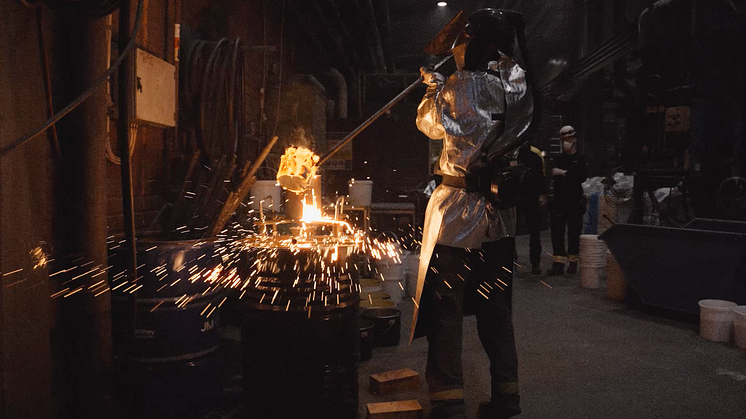
Press release -
Cemvision hits major milestone by valorising EAF slag into GBS grade SCM
As the global steel industry accelerates its transition to low-carbon production, Cemvision proudly announces a pioneering technology that transforms underutilized, low-value Electric Arc Furnaces (EAF) and Basic Oxygen Furnaces (BOF) slags into a high-performance Supplementary Cementitious Material (SCM), while also recovering valuable metals.
Over 55 million tonnes of steel slag are generated annually in the European Union, with 52% of this volume currently underutilized. Instead of being reused, this valuable material is often landfilled at significant expense or, at best, directed to other low-value applications. While Granulated Blast Furnace Slag (GBS) has historically been crucial for decarbonizing cement production, its availability is declining as Electric Arc Furnaces and Direct Reduced Iron (DRI) replace traditional blast furnaces. The U.S. leads this industrial transformation, with 70% of its steel production coming from EAFs. Europe follows at 30% EAF production, a share that continues to grow as older blast furnaces are decommissioned. Yet, EAF slag remains underutilized mainly due to its chemical composition and high metal and impurity content.
Cemvision's patent-pending beneficiation process upcycles slag into a premium Supplementary Cementitious Material (SCM). The performance of an SCM is typically measured in reactivity and glass content. Third-party testing of Cemvision’s SCM shows that it is on par with, or outperforms, Ground Granulated Blast-furnace Slag (GGBS) on both. EAF slag typically contains high amounts of iron oxide (25-40 percent), of which 99 percent can be extracted and recovered in the Cemvision slag valorisation process. The iron can then be returned to steel producers and reintroduced into the steelmaking process, thereby completing a circular material loop and improving steelmaking efficiency. Other valuable elements in EAF slag such as Chromium are also recoverable with the Cemvision slag valorisation process. The output material helps secure feedstock for both Cemvision’s Re-Ment Massive and Rapid, and can be used as a clinker-replacing SCM, ensuring and extending circularity in the cement industry.
Cemvision has successfully piloted this innovation with the world-leading metallurgical research institute, Swerim, proving both technical feasibility and commercial potential.
Oscar Hållén, CEO of Cemvision, comments:
"This is a game-changer not only for the cement industry but for steel producers as well. Our process enables high-performing cement products from materials that would otherwise be treated as waste. With this innovation, we're proving that decarbonization and circularity can go hand in hand, and at scale."
Dr. Elsayed Mousa, Senior Researcher in Metallurgy at Swerim, added:
"Our trials with Cemvision show a clear pathway to industrialize this process. The chemistry and performance of the resulting materials are not only viable, they're promising enough to set a new benchmark for what green cement can be made from."
Topics
Categories
Cemvision produces a circular, high-performance cement that reduces CO₂ emissions by up to 95% compared to traditional Portland cement. The company was founded in 2020 by experienced leaders and researchers from the cement industry and is backed by leading investors, including Bill Gates’ Breakthrough Energy, Norrsken Foundation, EQT Foundation, BackingMinds, Polar Structure, JM, and Zacua Ventures


